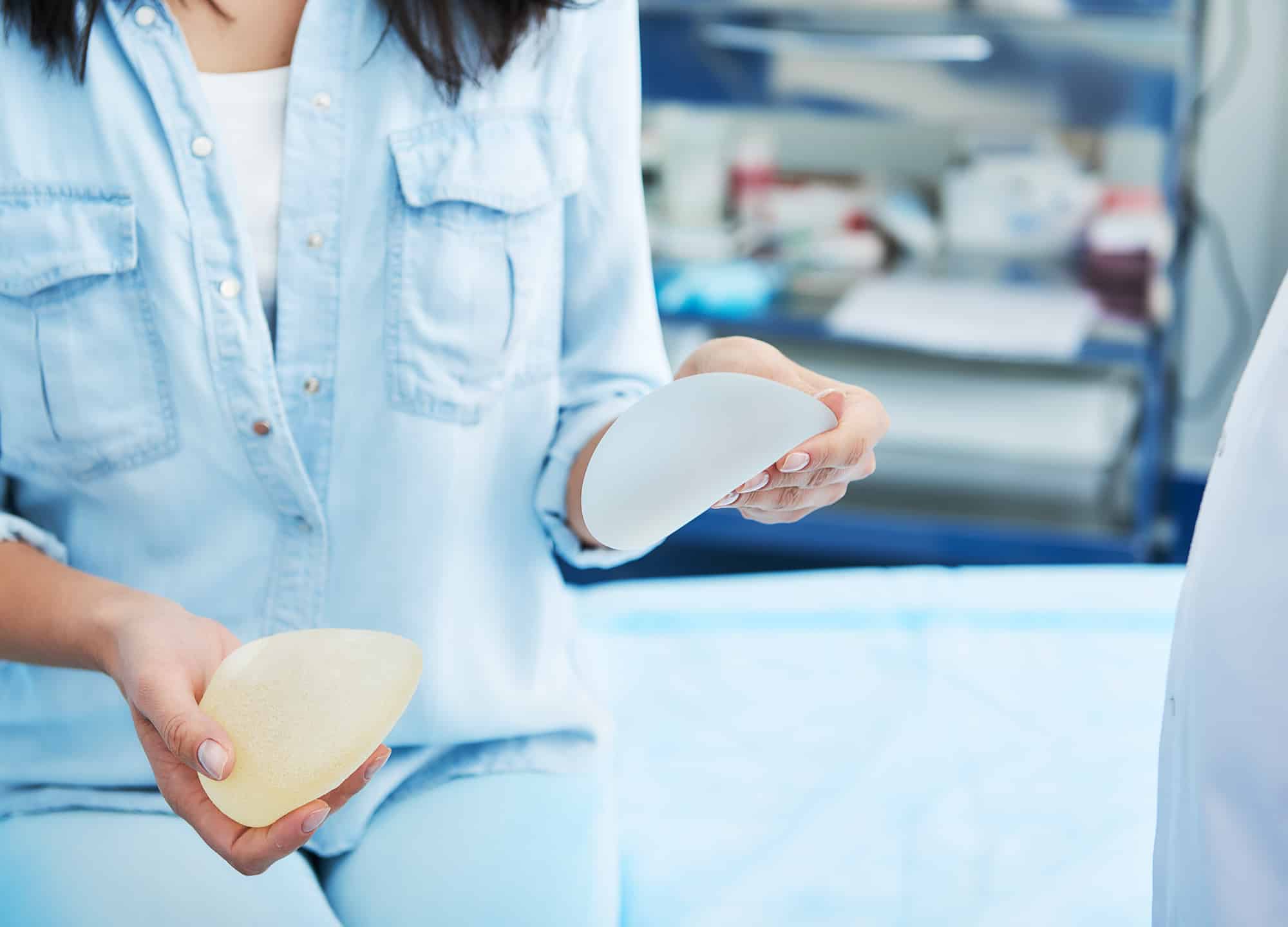This article has been medically reviewed for accuracy by Brea, CA plastic surgeon Dr. Frederic H. Corbin on September 15, 2020.
Breast implants have been controversial since they were popularized in the U.S. in the 1960s for cosmetic augmentation of breast size. Since then, both the implant’s filler material (either a silicone gel or saline/sterile saltwater solution) and the outer shell (either smooth or textured) have been linked to significant safety concerns. During the 1990s, amid reported patient injuries and billion-dollar lawsuits, the U.S. Food and Drug Administration (FDA) removed silicone implants from the market. Since being reintroduced in late 2006, after a 14-year ban, breast implants have continued to be dogged with problems. In October 2019, the FDA released draft guidance proposing that manufacturers print warnings on breast implant packaging to explain the risks and complications. Earlier in the year, a number of U.S. and international manufacturers had recalled textured shell implants (both saline and silicone) after studies had linked them to a rare form of breast cancer called breast implant–associated anaplastic large-cell lymphoma (BIA-ALCL). And although unrelated, a significant number of breast implant patients have also reported an onset of symptoms, ranging from brain fog and memory loss to anxiety and fatigue, months to years after implantation—a condition widely referred to as breast implant illness (BII).
Nonetheless, breast augmentation with implants remains one of the most popular plastic surgery procedures—one that 96% of RealSelf users say is “Worth It” and surgeons insist is generally safe. But both silicone and saline implants have their upsides and downsides. To clear up confusion and dispel common myths, we talked to top plastic surgeons to find out what you need to consider when choosing between saline and silicone breast implants.
Related: Not Knowing This Before Getting Breast Implants Turned the Procedure Into One of My Biggest Regrets
Breast Implant Safety
“There has been no device more extensively studied than breast implants,” says Bethesda, Maryland, board-certified plastic surgeon Dr. Franklin Richards. “Saline and silicone implants are equally safe.”
Recent data from the American Society of Aesthetic Plastic Surgeons (ASAPS) shows that 88% of breast implant surgeries today use silicone implants, but medical use of silicone remains a controversial issue. The FDA’s official stance: silicone breast implants are safe because “the shell keeps the silicone from migrating within the body.” In addition, studies have found that there has been no significant difference in the incidence of BIA-ALCL between the two types of breast implants.
However, finding a leak in a silicone implant can mean extra complications. “You will know when a saline implant ruptures without having to do any tests, because your implant will deflate—and it’ll be obvious,” says Seattle board-certified plastic surgeon Dr. Robert M. Grenley. “With silicone gel implants, implant rupture cannot be diagnosed by physical examination and usually does not show up on mammograms. An ultrasound or MRI exam is usually required to detect a ruptured silicone gel implant.”
A ruptured silicone breast implant might eventually cause pain or changes in the contour or shape of the breast. Women who have silicone gel–filled implants are advised to get an MRI scan three years after the implant surgery and continually about every two years.
Removal of ruptured silicone implants also poses its own set of health risks. A surgical maneuver called en bloc, which removes the implant and surrounding scar tissue (capsule) from the breast pocket as an unbroken singular unit, is required to contain the leaked silicone gel. Because this procedure requires the surgeon to cut blindly around the scar tissue behind the implant, there’s a higher chance of injury to healthy tissue, nerves, and lungs.
Breast implants are also not lifelong medical devices and will require replacement. The average implant lasts only between 10 and 20 years, and 20% of women who have saline or silicone implants get them removed (and often replaced) within eight to 10 years.
1. The cost of implants
“Silicone implants [can] cost approximately $1,000 more than saline implants,” says board-certified plastic surgeon Dr. David Finkle from Omaha, Nebraska, in a RealSelf Q&A.
Beyond that initial implant cost from the manufacturer, the lifetime cost of silicone implants can be slightly higher than that of saline because of the ongoing maintenance of MRI costs.
According to RealSelf data, the average U.S. cost of breast implants is $6,375. Cost is affected by your location, your doctor’s skill level, and the complexity of your individual surgery.
2. How breast implants feel
“All a patient usually needs to do is feel a saline implant and a silicone implant, and 99% will pick silicone,” says Dr. Frederic H. Corbin, a board-certified plastic surgeon in Los Angeles.
Why? Doctors on RealSelf say that silicone implants are made of a material that more closely mimics the weight and suppleness of a natural breast than liquid saline solution does.
3. How breast implants look
Choosing your implant material can also depend on the shape and size of your natural breasts. For some patients with less natural breast tissue, there’s a higher chance that “saline implants will also have a less natural look and a greater risk of visible implant wrinkling,” says Dr. Grenley.
But some pre-op patients with asymmetrical breasts may choose saline because the volume of each implant can be adjusted with more saline solution, to even out the breasts.
4. Breast implant age requirements
In 2006, the FDA reapproved cosmetic use of silicone implants in women over 22 (and for reconstruction at any age). Dr. Daniel G. Schultz, the director of the agency’s Center for Devices and Radiological Health at the time of review, said that the FDA “wanted to make sure that breast development had been completed before these devices had been implanted” and said that the agency also did not have clinical data on younger women. Although it is still considered safe (and legal) for surgeons to use silicone implants in those under the age of 22, manufacturers typically won’t honor their warranty when the implants are used off label—or, in other words, in patients under 22—since it doesn’t follow FDA guidelines.
On the other hand, the FDA approved saline implants for breast augmentation surgery in women over 18 and for breast reconstruction for post-mastectomy patients of any age in 2000. The reason behind the age restriction difference is simply that the risks are different for the two products. For example, silent ruptures are a risk for silicone breast implants but not with saline implants. A higher age restriction for silicone implants helps to ensure that patients are mature enough to understand the additional risks associated with silicone implants as well as the safety precautions (occasional MRI scans) they’ll need to follow throughout their life.
Of course, everybody is unique and your needs might be different than your sister’s, so talking to a board-certified plastic surgeon is the best way to determine what kind of implant is right for you.
And when you’re ready, make sure you know the 21 essential questions to ask at a breast implant consultation.











